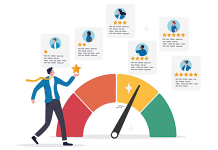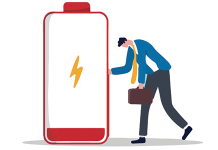COVID-19 turned the world of sales upside down. Millions of reps now sell from their homes and sales leaders are in search of new ways to motivate their teams. One thing is clear to all of us: the pandemic made existing sales productivity challenges more pronounced and created new ones. As leaders, we need to find ways to shift our operating philosophy for this new age of sales.
Even before the pandemic, there was a widely recognized struggle among heads of sales: A widely accepted statistic is that 20% of reps drive 80% of the revenue. Increasing the performance of the majority of the sales team has always been the manager’s biggest priority.
Before 2020, shared office environments and proximity to manager/coaches helped with driving results, managing pipelines or jumping in to move a stuck deal forward. With that interaction no longer available — at least short term — the revenue gap in sales is widening.
I work with sales leaders every day to help with their revenue goals, and the ones that get the most out of their teams today have three things in common.
1. Virtual Motivation Champions (AKA Micro Motivation Champions)
According to the 2020 State of Sales study by Salesforce, 48% of reps feel less productive than they used to. We are in a completely new territory of sales motivation — and it’s here to stay. A few important things that motivated reps, such as perks of travel and face-to-face customer meetings, are gone for now. In addition, the tools that reps use to manage their work weren’t built for an always-on environment. They are simply not engaging enough. Leaders that realize the shift are leading the way with two key trends in sales motivation:
- Motivating reps in real time becomes the norm. Motivation is the new currency of sales. Understanding that the low-touch experience of today’s virtual selling makes it hard to move deals forward, adapting sales leaders are shifting the focus from the end result of a big win to motivating a lot of small wins that lead to it. They become true virtual motivation champions and embrace the concept of micro incentives to motivate them each step of the way.
- Tracking and rewarding sales activities is dead. We have a customer who, before enlisting help from SetSail, gamified tracking and rewarding the activities of sales reps to make sure they were “putting in the work.” Rewards were based on how many emails and calls reps made. The winner was a rep who ended up selling the least. Turns out he was frequently chatting with his girlfriend at a key account he owned.
Tracking sales activities is the wrong way to measure progress. In an age when we have so much data about our customers and their touchpoints, and with AI analyzing all that, it’s time to do tracking right. It’s the customers’ responses to reps’ efforts that need to be tracked and rewarded. You can email all you want, but if the customer doesn’t respond with positive language, you are doing something wrong and should not be rewarded.
2. Masters of Data, At a Whole New Level
Did you know that having six-plus active contacts in an early stage of a deal results in 62% win rate? Are you aware that five or more meetings accepted and held increase win rate by 47%? These numbers are specific to a large enterprise customer we worked with based on the insights from 654 deals. They use this data daily to identify deals that show fewer indicators of success, and focus their attention accordingly to hit their overall revenue goals.
Do you have those metrics in place for your business? New age sales leaders must reach that level of granularity in understanding their pipeline. That’s a whole new level of data mastery. Luckily, there is more digital footprint of sales activities than ever before. Tools from call recording to email integration with CRM allow leaders to track activities and gain both deep and broad visibility into what’s going on.
3. Whizzes of Automation, from Data to Behaviors
Finally, new age sales leaders must be whizzes of automation. But it won’t be enough to just have data. When I headed the data science team for Google’s major sales divisions, I was the first to bring all the data and insights to sales leaders to act on. My team would build dozens of dashboards (we even built a dashboard to monitor if dashboards were being used) with perfect charts and annotations. But none of that led to enough action.
That’s when we decided to put that data into action and automate steps from data all the way to rep behavior. We first derived those signals that lead to success, like getting VP engagement in a deal or multi-threading activities. We then translated them to rep behaviors on a point-based system. Automation came in tying micro incentives to those steps and to the rep’s daily workflow. The results were astonishing. The average attainment of reps among a team of a few thousand more than doubled. That level of automation — from data all the way to behaviors — is exactly what this all-digital and remote-selling world needs.
With COVID-19 vaccine distribution moving swiftly, we hopefully are nearing a return to normal for our daily lives. But the world of office work is unlikely to return to the pre-2020 era. The pandemic pushed many companies across industries to create liberal work-from-home policies. The impact on sales teams will be long-lasting. For sales leaders, this means the new approaches for motivating remote teams, using data to monitor and improve daily behaviors, and truly automating the sales process will be indispensable tools for success in the next decade and beyond.




